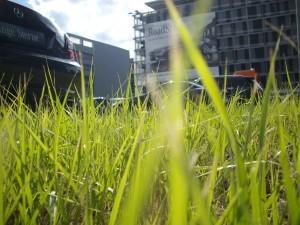Did you think communicators only know about communications? Not quite enough for us, I’m afraid. In reality, us “B2B ghostwriters” need to continuously learn about new industries, trends, technologies, and products, including green and circular economy.
And it’s not just learning but really digging rather deep into these topics in order to design and deliver effective messages and valuable content for our clients and their stakeholders. A brief is just the beginning. Or actually: it’s a milestone we reach when we know enough to get started.
Material and resource efficiency in a low-carbon society
The environment and sustainability concern us all, not least the building and construction industries. It’s a global challenge to understand that the economy takes its raw materials and energies from nature and what actually makes a green or circular economy. Evaluating the rebound impact of our increasing consumption is particularly difficult. Developing the energy and material efficiency and structure of our communities is a central issue in all low-carbon Finland scenarios, for example.
Finland is still a developing country regarding the recycling and re-use of construction waste. Virgin materials are too cheap here, and our market too small and capital-intensive. We may be copying models already abandoned elsewhere in the world. However, we’re eager to innovate, which is a major advantage. Life-cycle assessment (LCA) is becoming more and more important, but we must remember to make a difference between assessing the life cycles of actual products and the impact of their production and use (LCI).
Moisture-technical safety and construction chemistry
The time of juxtaposing different construction materials is over. Instead of eitherorring wood and stone, for example, we should think whether it’s better to leave the tree standing in the woods sinking carbon or use it as a renewable resource to create a long-life-cycle product.
At the same time, it’s just as important to consider the moisture-technical safety and chemical consistence of building structures and products. Anything counts as toxic in large amounts, and human beings are perfect measuring devices to know what is the right level of weather proof versus fresh air. Passive house is a great invention assuming we know it’s not a good idea to wrap a person too tight in plastic foil. That will hurt.
The emissions of building materials are not yet systematically monitored in Finland. Initial studies suggest a possible connection to type 2 diabetes. Manufacturers of building products must ensure that their long-term effects are verifiable.
So, it’s not just engineers who need to learn and think about the environment in developing the world into a better place to live; us communicators need to know, too, and that is definitely one of the highlights of the profession.
Many thanks to the specialists and speakers at the Green Forums organized by Green Building Council Finland and at other industry events and webinars. This post was published for the first time 7 March 2013.
